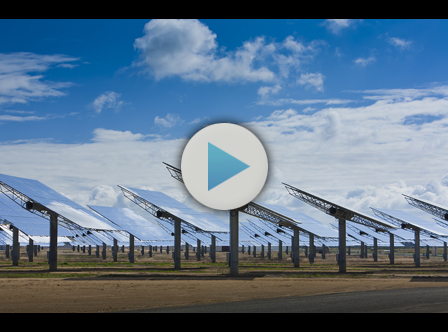PROJECTS
CENER and IK4-TEKNIKER have jointly developed a solution to calibrate heliostats simultaneously for the purpose of simplifying adjustment tasks and optimising solar thermal electric power plant operations.
The activity of a solar power plant equipped with a central receptor depends on the efficiency of its field of heliostats and on the degree to which sunlight is reflected with a maximum level of accuracy. It is therefore essential to adjust its orientation during the construction stages of a plant and subsequently repeat this action on a regular basis throughout its life cycle.
A heliostat is a solar collector equipped with one or several mirrors that run alongside a lens to follow the path covered by the sun and reflect sunlight on a given point. Up until now, most plants had solar fields made up of a small number of these devices, so that whenever calibration was performed it was done sequentially, i.e., only one device at a time.
The strong need, however, to reduce solar power generation costs has given rise to larger plants equipped, in some cases, with smaller heliostats. For instance, the world’s first industrial PS10 solar electric thermal power station (10 MWe) situated in Sanlúcar la Mayor (Seville - Spain) has 624 heliostats, whilst the world’s most recently built power plant (377 MWe) located in Ivanpah in the Mojave desert (United States) has 173,500 in operation.
In this scenario, sequential calibration solutions are not feasible and the sector is looking into new, more agile adjustment methods. A faster recalibration solution, moreover, would make it possible to reduce heliostat stability requirements and would also lessen production costs.
The calibration procedure developed by CENER (the National Centre for Renewables) and IK4-TEKNIKER allows the entire field of heliostats to be adjusted simultaneously and on the same day. Calibration can also be performed without interfering with any of plant’s operations as it could be done at night or during shutdowns. To this end, the new system has been equipped with low-cost cameras mounted on each device and several targets scattered throughout the field.
The degree of accuracy of a heliostat greatly depends on knowing its position and, above all, its kinematics. Although these details are clear in terms of design, they may undergo variations arising from manufacturing constraints, assemblage, fine-tuning and lack of stability. In view of the problem, the solution developed by both organisations addresses a measuring and processing procedure that identifies any parameters influencing heliostat kinematics.
The solution has been tested successfully at the Solar Platform in (PSA) and has been protected via the following patent application:
“A calibration method for heliostats”. An innovative approach to an unmanned technique that ensures proper sunlight reflection on a tower’s receptor.




